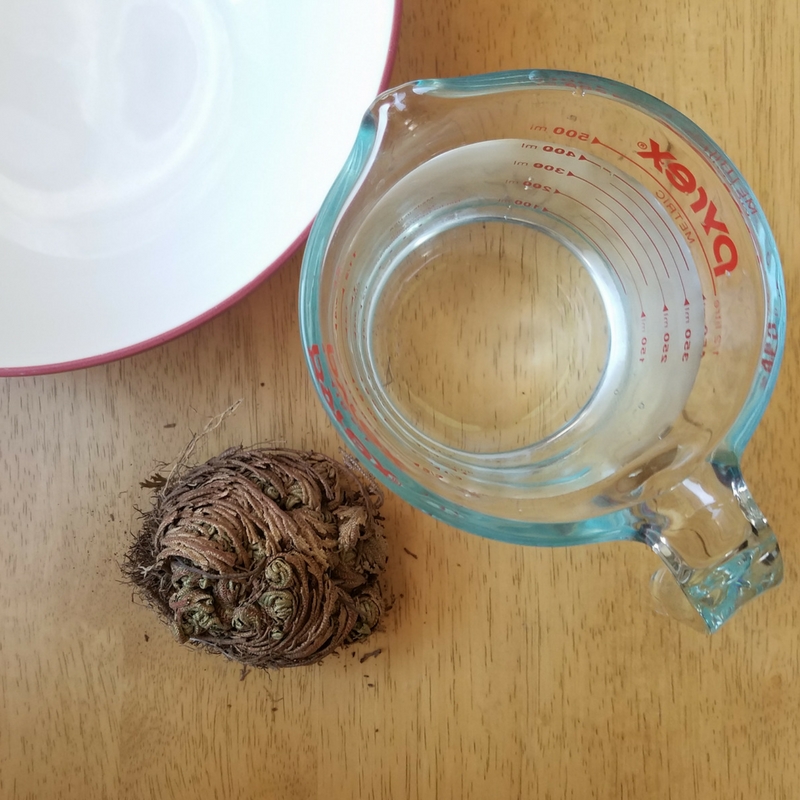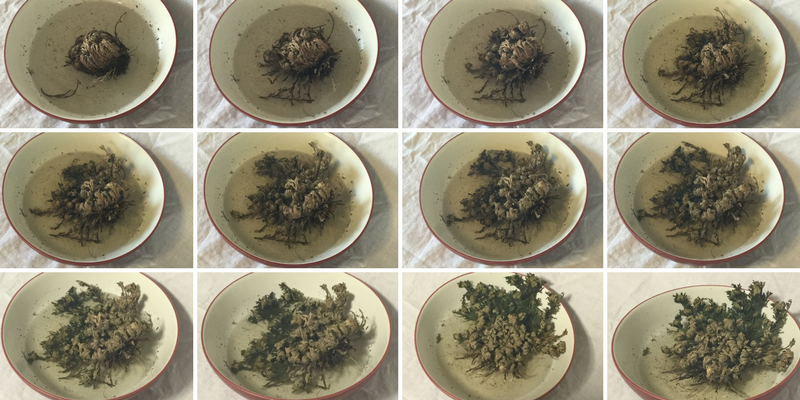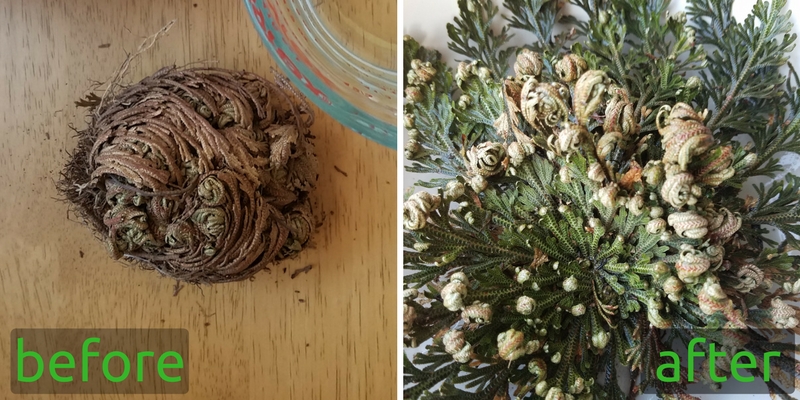This desert plant has an amazing way of coping when there’s no access to water. The entire plant curls up into a dried ball of leaves for as long as it takes – even years – until water is available to bring it back to life! The resurrection plant I reanimated is also known as dinosaur plant, because it’s been found in fossils that date from at least 425 million years ago (millions!) Another name it goes by is false rose of Jericho.
Now let’s bring a plant to life!
 What You Need:
What You Need:
- Resurrection Plant
- 2 cups Water
- Shallow Bowl
Directions
Step 1
Pour the water into the shallow bowl.
Step 2
Set the root side of the plant down and the leaf side up in the shallow bowl. (The roots are the tinier-looking twigs and the leaves are the thicker, flattened twigs.)
Step 3
Within eight hours most of the leaves will unfurl and start turning green. The tips of the leaves will continue to open on the second day.
Step 4
If you want to keep your plant, allow it to dry and close into a ball again. Once it’s completely dry, place the plant in a plastic bag and store it in a cool, dark place until you’re ready to regrow it again.

Explanation
The resurrection plant I used is native to Arizona, Texas and northern Mexico (Selaginella lepidophylla). There is another resurrection plant, the true rose of Jericho, that is native to North Africa (Anastatica hierochuntica). Both have the same mechanism to cope with dry desert conditions: curling up into a ball when they don’t have access to water, sometimes uprooting and rolling around as tumbleweeds until they find water. However, the African and American resurrection plants are not closely related to one another.
Did You Know? The resurrection plant from the Americas is a member of the division of lycopods, which reproduce by spores instead of seeds. These aren’t your typical spores though. These spores are highly flammable and make quick-burning fire when ground up into a fine powder. The spores were previously used in fireworks and are still used today for fiery displays in magic and theatrical shows.
Have you grown a resurrection plant? Share your tips in the comments! Or have you visited and seen this resurrection plant growing in the wild of the Chihuahuan Desert?



Will my plant ever get bigger
I haven’t tried growing mine in soil, but I would think it could grow bigger.